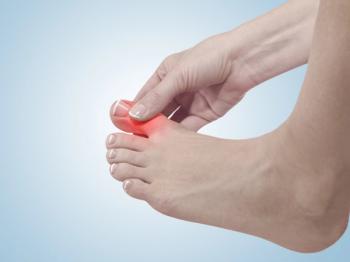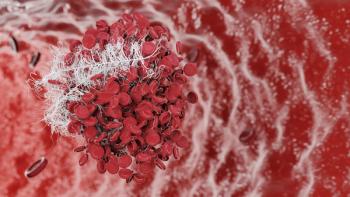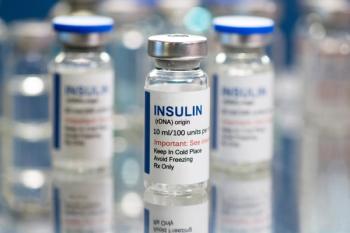
Combination Therapy Shows Favorable Overall Survival for Patients with Advanced Melanoma
Updated analysis shows favorable survival outcomes with nivolumab and ipilimumab and provides evidence of long-term survival in patients with advanced melanoma.
Researchers with the Yale School of Medicine Smilow Cancer Center and the New Haven Hospital have updated data on overall survival (OS) of patients with advanced melanoma treated with the combination therapy of nivolumab (NIVO) and ipilimumab (IPI). The combination once again showed suitable survival outcomes once a patient stopped treatment, regardless of BRAF gene or lactate dehydrogenase status, according to the study authors. Their findings were presented at the American Society of Clinical Oncology (ASCO) Annual Meeting in Chicago, IL.
According to the National Cancer Institute, melanoma is the most serious type of skin cancer and is much less common than other forms; however, it is more likely to invade nearby tissue and spread to other parts of the body.1 The risk of melanoma increases with age after 40 years of age.
“At ASCO 2019, we’re reporting the long-term follow-up of how the first patients with nivolumab and ipilimumab have done,” lead study author Michael Atkins, PhD, in an interview with
According to Atkins, the study authors wanted to determine OS after 5 years of analysis. It was reported that patients with advanced melanoma who participated in the previous study had a 3-year OS rate of 63% with NIVO+IPI concurrent therapy in the initial phase 1 dose-escalation study for the combination.
The participants were adults with previously treated or untreated unresectable stage 3 or 4 melanoma. They were randomly assigned to receive the combination therapy of NIVO and IPI, in the following forms: (1) NIVO 0.3 + IPI 3; (2) NIVO 1 + IPI 3; (2a) NIVO 3 + IPI 1; (3) NIVO 3 + IPI 3; (8) NIVO 1 + IPI 3.
Those in cohorts 1 to 3 maintained the dose NIVO Q3W × 4, then NIVO + IPI Q12W × 8 at assigned doses; cohort 8 received NIVO Q2W for up to 96 weeks. The OS rates and safety for patients were also examined for up to 2.5 years after they stopped treatment for any reason. Investigators also studied the OS of participants for an additional 3 years.
“Most remarkably, there was an overall survival in 49% of all cohorts, no matter if the patients were PDL1 positive or negative, no matter what the stage of the cancer was, no matter the LDH, at least 49% of patients in that group and as many as 71% of patients were alive in 4 years,” Dr Atkins explained. "So, a lot of patients, no matter how risky their tumor was, will appear to be cured of their disease by these combinations.”
The results indicated that 4/4.5 year survival were approximately 57% in all cohorts. Additionally, the following OS 4-year rates were found:
- 62% for patients with normal rates
- 49% for patients with elevated LDH rates
- 54% for patients with wild-type
- 61% for patients with mutant BRAF tumors
According to the study, following the last dose of study drug, overall post-treatment 1-, 2-, and 3-year OS rates were 74% (64, 82), 65% (55, 74), and 56% (46, 66), respectively. In patients who discontinued due to drug toxicity (n = 32), post-treatment 1-, 2-, and 3-year OS rates were 84% (66, 93), 75% (55, 86), and 65% (45, 79), respectively. Finally, in patients who discontinued for disease progression (n = 30), these were 52% (33, 68), 34% (18, 51), and 24% (11, 41), respectively.
In the clip below, Dr Atkins discusses the trial design and results demonstrating long-term benefits of the combination therapy.
According to Atkins, this updated analysis from the previous study of the same combination demonstrated favorable survival outcomes with NIVO+IPI, regardless of BRAF or LDH status, and provided evidence of long-term survival after patients with advanced melanoma stopped treatment.
In a
Reference
- Skin Cancer (Including Melanoma)—Patient Version. National Cancer Institute website. https://www.cancer.gov/types/skin. Accessed May 31, 2019.
- Atkins MB, Kirkwood JM, Wolchok JD, et al. Long-term follow-up of CA209-004: A phase I dose-escalation study of combined nivolumab (NIVO) and ipilimumab (IPI) in patients with advanced melanoma. J Clin Oncol 37, 2019 (suppl; abstr 9533). Presented at: 2019 American Society of Clinical Oncology Annual Meeting. May 31-June 4, 2019. Chicago, Illinois.
Newsletter
Stay informed on drug updates, treatment guidelines, and pharmacy practice trends—subscribe to Pharmacy Times for weekly clinical insights.







































































































































































































